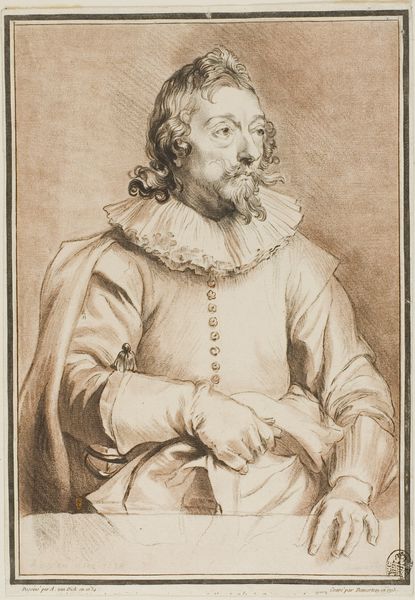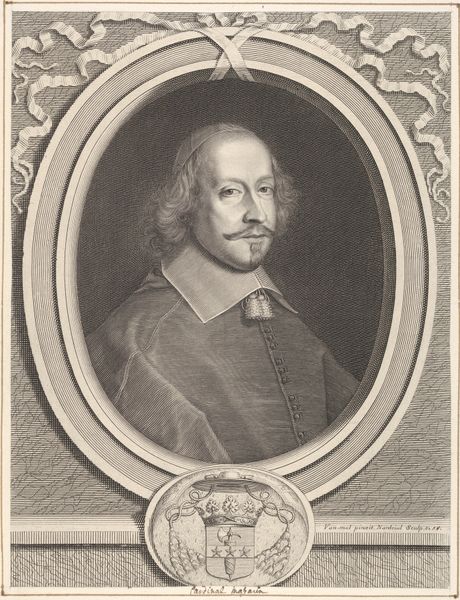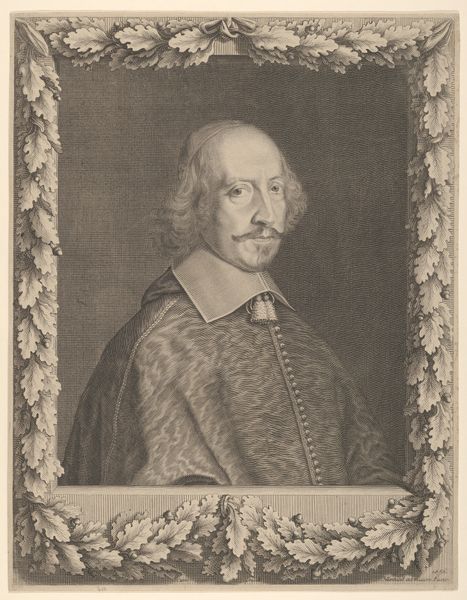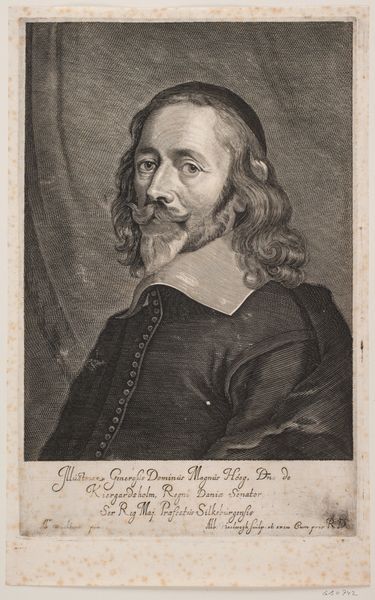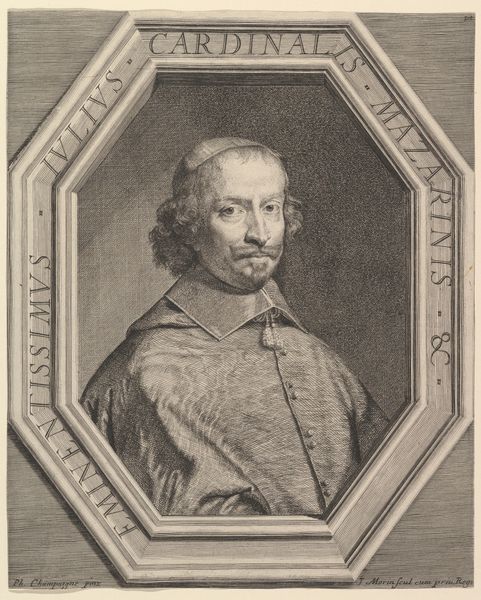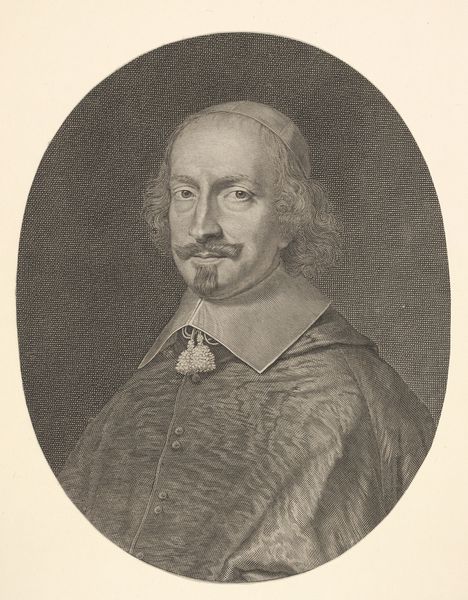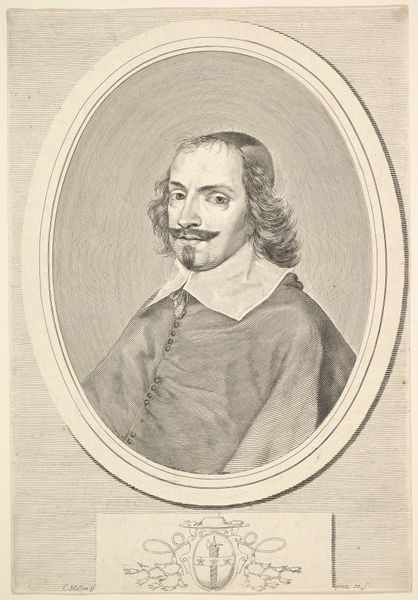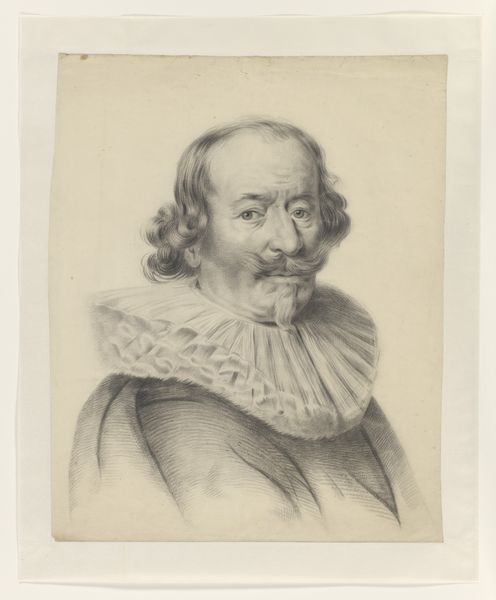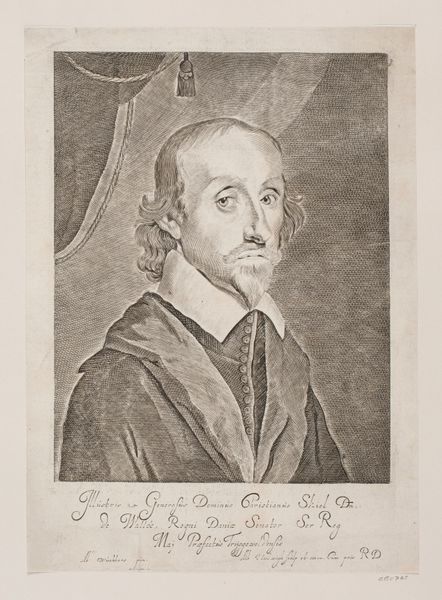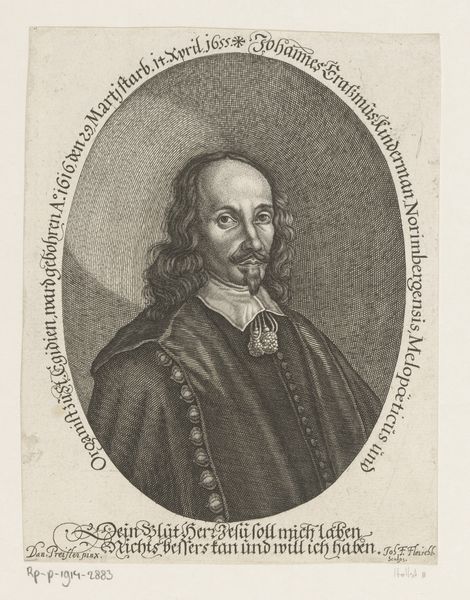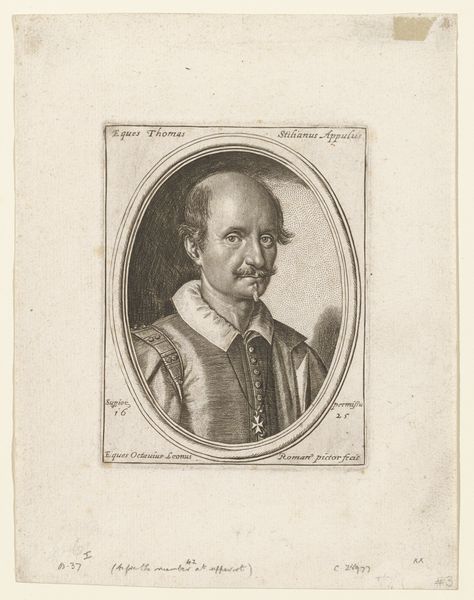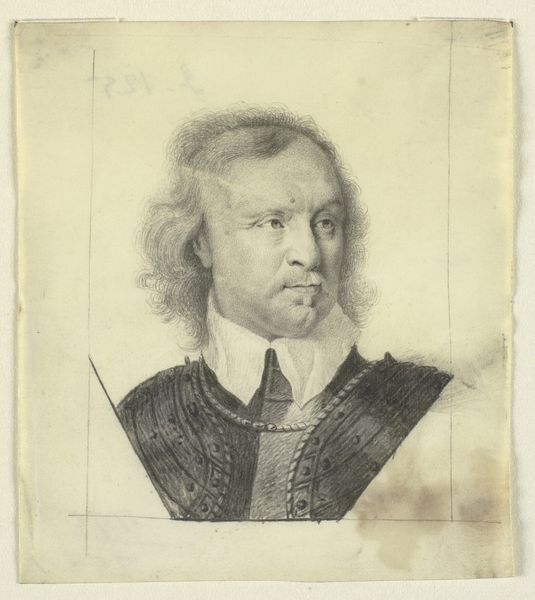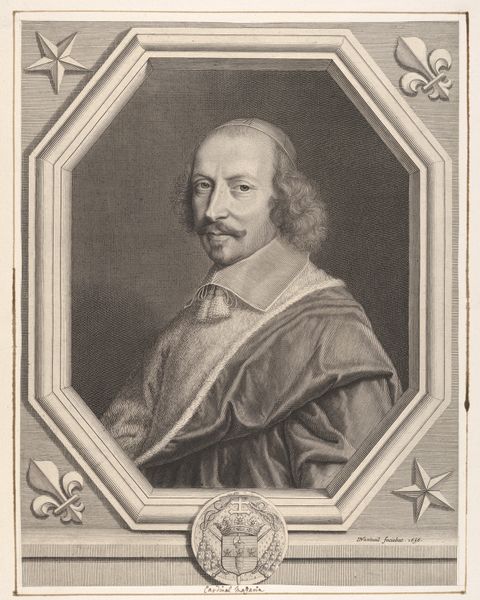
Bildnis eines Mannes mit Spitzbart und herabwallendem Haar im Oval 1632
0:00
0:00
drawing, chalk
#
portrait
#
drawing
#
baroque
#
figuration
#
chalk
#
history-painting
Copyright: Public Domain
Curator: Standing before us is a captivating portrait crafted around 1632 by Johann Jakob Kornmann. He renders his subject through the medium of chalk, bringing to life the 'Bildnis eines Mannes mit Spitzbart und herabwallendem Haar im Oval'—a portrait of a man with a pointed beard and flowing hair in an oval frame. Editor: The immediate impression I get? He looks like he knows something I don't. The intensity in his eyes and the set of his mouth...there's a hint of playful superiority, don't you think? It feels very intimate. Curator: I appreciate that interpretation. Viewed through a critical lens, the subject's features, meticulously captured within this oval composition, invite analysis concerning representations of masculinity, power, and status during the Baroque era. Consider the function of portraiture as a tool for establishing identity and legacy. How does this particular depiction reflect broader societal norms? Editor: Right, because that glorious mustache basically screams 'I'm important!' But honestly, there's something so...human about him. Despite the finery, the perfect collar, the neat beard – you sense a vulnerability. Like maybe he's not as sure of himself as he wants us to believe. Curator: I find that compelling. We should note the interesting interplay of light and shadow that subtly sculpts the face. And how the textures come through in the rendering of hair and fabric—a characteristic of Baroque portraiture—and also invites the reading of socioeconomic identity. Editor: It's the details, isn’t it? Those subtle details that give the whole thing a life of its own. I imagine him, sitting there, maybe a little bored, a little impatient...waiting to become immortalized. Makes me wonder what he thought of it once it was done. Did he recognize himself? Curator: Indeed, a productive line of inquiry! Through this exercise of critically investigating art history we open opportunities for further dialogues interrogating questions of visibility, representation, and historical narrative. Editor: Absolutely. He might be from the 17th century, but this fella could be anyone, anywhere, at any time, just grappling with being human in a world full of expectations. You’ve helped bring it into a compelling, very needed light. Thank you.
Comments
No comments
Be the first to comment and join the conversation on the ultimate creative platform.
